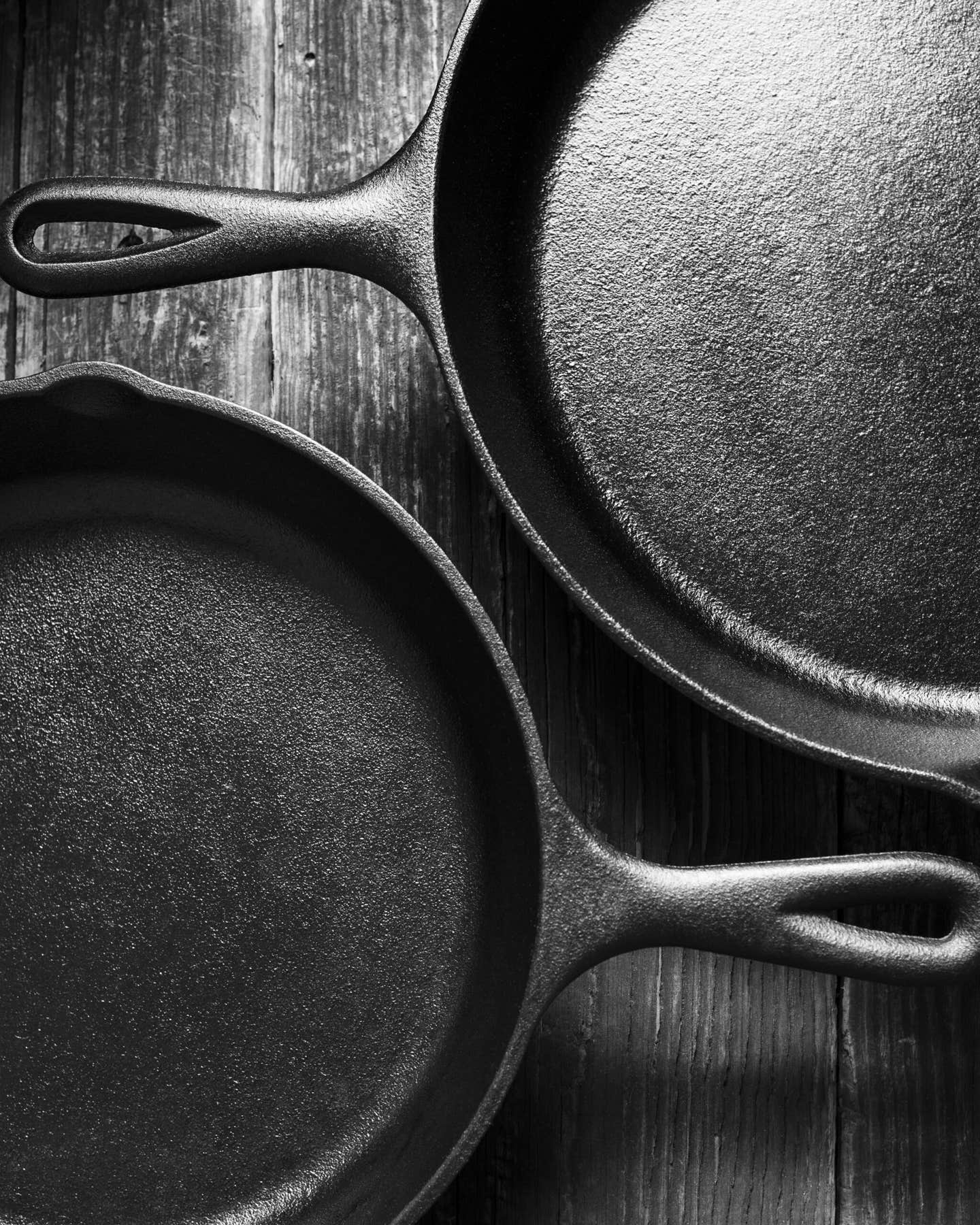
How to Clean and Care for Cast Iron Pans
Turn those rusty skillets into shiny kitchen heirlooms that last forever.
For many home cooks, a good, sturdy cast iron skillet is an all-purpose tool. It can be used for anything from roasting veggies and baking cakes to frying chicken and searing steaks. They are far more affordable and durable than fancy ceramic or aluminum cookware and they can take a ton of heat on the stove, in the oven, or even over a campfire. The only caveat? They happen to be a little high maintenance when it comes to cleaning and caring for them. However, with proper TLC, a cast iron skillet will last forever. Read on to learn how to season and clean your cast iron pieces so they can last for generations.
How to Season Your Pan
Seasoning is the most important step after purchasing a new cast iron pan. And while many of them come pre-seasoned, it doesn’t hurt to add another layer to protect your new investment. Seasoning—and we’re not talking about salt and pepper—creates a shiny, nonstick coating that protects your skillet from rust and prevents food from sticking to the surface.
To season, preheat your oven to 450 degrees F. Use a paper towel to wipe a small amount of neutral oil, such as canola, inside and outside of your skillet, including the handle. A neutral oil with a high smoke point, like flaxseed, canola or sunflower is the best; olive oil will burn. Place the pan in the hot oven directly on the wire rack, with a baking sheet below to catch any errant oil drips. Bake for 1 hour, until the oil is no longer sticky. Turn off the oven and let the pan cool completely inside.
Repeat the process as needed. The easiest way to ensure your skillet stays non-stick is to use it often. Cooking fatty foods, like bacon will help keep her good n’ greasy. When a skillet is properly seasoned, you should be able to fry an egg with no butter and no sticking.
Always Wash by Hand
After use, gently scrub your skillet with a small amount of natural dish soap and a non-abrasive sponge or dish brush. Contrary to popular belief, a little bit of soap is okay and won’t strip the seasoning. Never use steel wool or a metal scrubber to clean your skillet unless you’re doing heavy-duty stripping (more on this later). We hope this goes without saying, but cast iron should never—ever—go in the dishwasher.
Remove the Crusty Stuff
Make sure to remove any crusty, baked-on food right away. While the pan is slightly warm, pour on 1/4 cup kosher salt with some warm water and use a pan scraper or scrub brush to exfoliate and remove the food particles. For really stuck on food, try the boiling water method. Bring 2 cups of water to a boil until the food particles loosen. They should come off on their own, but you can aid them by using a wooden (not metal or silicone) spatula to scrape them off.
Dry Quickly
Use a paper towel or kitchen towel to thoroughly dry your pan immediately after washing. Leaving a skillet wet for too long can cause it to rust. That also means you never want to soak your skillet to clean it or put it in the dishwasher. Make sure you don’t use a fancy, decorative towel for this step, as a well-seasoned pan can leave black marks. You can also put your skillet into a low-oven temp and bake until dry.
Hit the Reset Button
If you enjoy scouring vintage markets for cookware, you’ve likely picked up some cast iron skillets that could use a facelift. Often, this involves completely stripping the pans from carbon buildup and burnt-on grease. There are a few tried and true methods of doing this, but many involve dangerous lye-based chemicals like oven cleaners. We find that in many cases, a decent amount of Bar Keeper’s Friend and a whole lot of elbow grease does the trick.
For heavier-duty stripping jobs, the oven-cleaner method is your best bet. In a ventilated space, like a garage, spay down your skillet with oven cleaner. Be sure to wear rubber gloves and a respirator mask so you don’t inhale the stuff. Once the pan is sprayed down all over, place in a trash bag for 24 hours. Using gloves, remove the pan from the garbage bag, rinse and scrub thoroughly using dish soap and a stainless steel scrubber. Rinse and scrub a couple of times to ensure all the oven cleaner is removed. Dry thoroughly and follow Step 5 to re-season.
Final Thoughts
Cast iron skillets are durable, affordable, and practically indestructible when cared for properly. Just like a car, service your skillets routinely and they will last forever. Neglect them and they will need more work to return to their glory days. While tedious at first, eventually your cast iron routine will become second nature. And, the more you use them, the more seasoned they will get. Whether you scored a skillet at the thrift shop or inherited one from your grandmother, follow these steps to keep it smooth and shiny for years to come.
Keep Reading
Continue to Next Story










